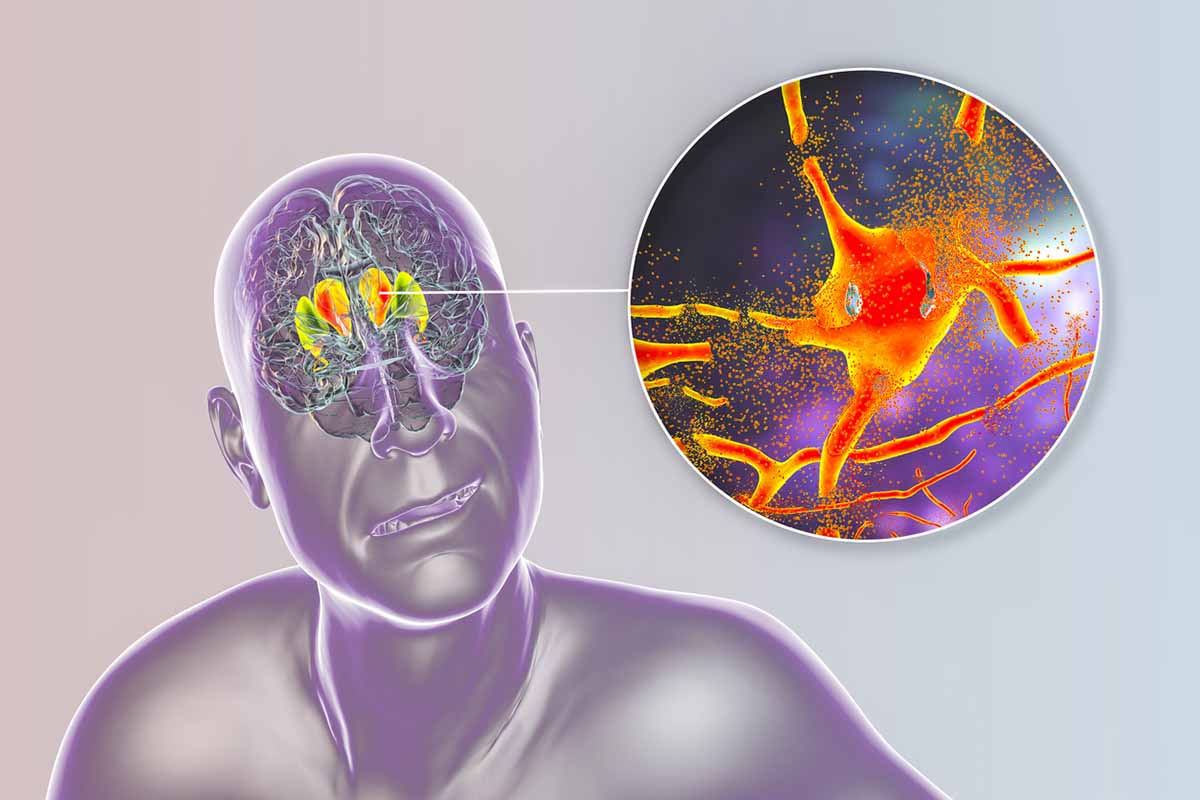Examining Risperidone Use in Those Diagnosed With Autism 1 Year After FDA Approval
To the Editor: Within the past 3 years, the US Food and Drug Administration (FDA) approved risperidone for the treatment of irritability (which includes behaviors such as aggression, self-injury, and temper tantrums) associated with autism in children and adolescents 5 to 16 years of age. This approval was the first of its kind and was given in part on the basis of the results of clinical trials completed with individuals with autism demonstrating effectiveness for its use with this population (ie, decrease in irritability, aggression, and self-injurious behavior).1-3 And, the limited research that has been conducted evaluating the use of antipsychotics in treating those with autism supports the use of risperidone over other typical antipsychotic medications such as haloperidol.4 However, recent published articles have raised concerns regarding the use of risperidone since the FDA’s approval.5,6 Specifically, some of the concerns raised include the use of antipsychotic medication to treat aggressive behaviors in those with intellectual disabilities and a paucity of measures for determining the effectiveness of antipsychotic drug use in those with autism (eg, multiple arm studies, agreement on diagnostic criteria for autism, equivalent dose ranges).
Given the concerns raised by others regarding risperidone use in those with autism, collecting information regarding the prevalence of use of risperidone is important in that it potentially informs us about the appropriate and possibly inappropriate uses of risperidone for this population. The purpose of this project was to determine what changes if any have occurred in the use of risperidone by individuals diagnosed with autism and/or intellectual disabilities (as individuals with intellectual disabilities are prescribed risperidone for irritability as well) in the State of Iowa since the FDA approved its use for the treatment of autism symptoms in October 2006 and to prompt further and closer evaluation of risperidone use on a larger scale.
Method. Both state institutions in Iowa were approached with a formal request for information regarding risperidone use at their facilities. The first state facility, Woodward Resource Center, has a census of approximately 250 individuals with ages ranging from 13 to 82 years, and approximately 33% of their residents are diagnosed with autism. The second state facility, Glenwood Resource Center, has a census of approximately 350 individuals with ages ranging from 9 to 98 years, and approximately 13% of their residents are diagnosed with autism. State facilities were provided with a protocol detailing the purpose and nature of the study, instructions for data collection, and data collection sheets.
Community providers were invited to participate in this study via e-mail. The Iowa Association of Community Providers, on behalf of the researcher, sent an e-mail message written by the first author explaining the purpose of the study, instructions, and a data collection sheet. This e-mail was sent on 2 separate occasions (October 2007 and January 2008). There are approximately 134 community-based organizations that have membership with the Iowa Association of Community Providers. All member organizations are licensed and accredited to provide services to children and adults with intellectual and developmental disabilities.
State facilities and community care providers of individuals with intellectual disabilities were asked to collect data regarding individuals’ risperidone use at 2 points in time—April 1, 2006 (6 months prior to FDA approval), and October 1, 2007 (1 year after FDA approval). These dates were chosen because medical records would be more easily available and accessible for state facilities and community providers for both time periods. Using the data sheets provided by the researcher, the following information was provided for each individual taking risperidone: diagnosis of autism vs intellectual disability (no autism), existence of problem behavior (yes or no), age, gender, diagnosis of mental illness (yes or no), and level of mental retardation. State facilities and community providers were also given a list of diagnoses that qualify as mental illness (depression, seasonal affective disorder, bipolar mood disorder, schizophrenia, schizoaffective disorder, anxiety disorder, obsessive-compulsive disorder, posttraumatic stress disorder, intermittent explosive disorder, impulse-control disorder, oppositional defiant disorder, and borderline personality disorder) and a list of behaviors that are considered "problematic" (including aggression [hitting, punching, hair pulling, scratching, grabbing, etc], self-injurious behavior [head hitting, head banging, hand biting, etc], property destruction [eg, breaking possessions, destroying home furnishings], atantrums [yelling, screaming, thrashing], dropping to the floor, and pica).
Results. Both state facilities participated in the study; unfortunately, only 7% of community agencies responded to invitations to participate (10 agencies statewide). That notwithstanding, analyses of data received were completed. To analyze the relationship between characteristics (ie, age, gender, level of mental retardation, diagnosis of mental illness, problem behavior, and residential setting) for our 2 samples (those receiving risperidone in April and October) and risperidone use for those with and without a diagnosis of autism, we conducted χ2 analyses. (Age was grouped: children and adolescents were defined as being from 6 to 19 years old; young adults were defined as being 20 to 39 years old; middle aged individuals were defined as being 40 to 59 years old; and older adults were defined as being 60 years and above.) There was no relationship between found for any of the characteristics and an autism diagnosis between the 2 samples. In other words, both cohorts appeared similar in terms of their characteristics.
Visual inspection of the distribution of the data between those diagnosed with autism and those not diagnosed with autism warranted further analysis of the data. Although there was a lack of differences between the samples, the samples were not pooled for this further analysis primarily because most of the subjects in the April sample were also subjects in the October sample. Thus, we analyzed the relationship between characteristics (ie, age, gender, level of mental retardation, diagnosis of mental illness, problem behavior, and residential setting) of individuals with and without a diagnosis of autism within each of the samples. Significant differences were found for 4 characteristics. There was a relationship between age and autism diagnosis for the October sample (χ23 = 9.992, P = .019; N = 176) and a tendency toward a relationship for the April sample (χ23 = 7.334, P = .062; N=186) in that those without an autism diagnosis using risperidone were older than those risperidone users who had an autism diagnosis. There was also a relationship between level of mental retardation and autism diagnosis for both the April (χ23 = 20.771, P = .000; N = 179) and the October samples (χ23 = − 17.067, P = .001; N = 167); specifically, the distribution of individuals who did not have a diagnosis of autism were equally reflected across all levels of intellectual disability (mild, moderate, severe, and profound) whereas those diagnosed with autism who were taking risperidone tended to be diagnosed with severe and profound intellectual disability. (The initial analysis showed that there were 2 and 4 cells, respectively, that had expected counts less than 5 for level of mental retardation in the April sample and October sample. We excluded the categories "no mental retardation" and "borderline mental retardation" due to low counts.) A relationship between the existence of a mental illness and autism was also found for both samples (April [χ21 = 18.543, P = .000; N = 186]; October [χ21 = 14.897, P = .000; N = 176]) in that those who did not have a diagnosis of autism were more likely to have a psychiatric diagnosis than those who did have autism. Finally, a relationship between residential placement and autism diagnosis was found for both samples (April [χ21 = 8.998, P = .003; N = 186]; October [χ21, P = .011; N = 176]) such that community placement was more often associated with risperidone use in those without an autism diagnosis.
The number of individuals taking risperidone 1 year after FDA approval was relatively the same if not slightly lower than 6 months prior to FDA approval (April 2006, N = 186; October 2007, N = 176).
Although this study did not find significant differences in risperidone use from 6 months prior to 1 year after the FDA approved its use for the treatment of symptoms associated with autism, there are limitations that preclude generalization of these findings. First, we had very little participation by community providers, which meant an overwhelming amount of data came from our institutional sample, possibly creating bias or representation of the practices of a limited number of psychiatrists. Second, it is possible that 6 months was not a sufficient amount of time prior to FDA approval to begin to evaluate the effects approval had on psychiatric community’s prescription practice. That is to say, psychiatrists may have been well acquainted with the data supporting the use of risperidone in those with autism and had already been using it in this manner prior to April 2006. Finally, we collected data only on those taking risperidone. Knowing the proportion of the population that was using risperidone may have provided a more complete picture regarding its use.
Nonetheless, we found interesting patterns of risperidone use between those who had a diagnosis of autism and those who did not. We observed that those individuals receiving risperidone who did not have a diagnosis of autism tended to be older, higher functioning in terms of level of mental retardation, more likely to have a psychiatric diagnosis, and more likely to live in a community setting. It was beyond the scope of this survey to determine what accounted for the differences observed in use of risperidone between those with and without autism; however, one explanation for this result may be that those without autism who were higher functioning were better able to articulate their concerns, making it possible for physicians to make a psychiatric diagnosis that warranted risperidone use. Furthermore, there were more individuals older than 60 years without an autism diagnosis who were taking risperidone than those aged over 60 years with an autism diagnosis. One possible reason for this may be that those aged over 60 years had a longstanding history of antipsychotic use and perhaps physicians opted for treating with an atypical antipsychotic rather than a typical such as haloperidol to address possible concerns such as tardive dyskinesia. Finally, community providers are more frequently providing services to individuals with higher rates of problem behaviors such as aggression and self-injury. One might have been inclined to speculate that the presence of behavior problems might influence risperidone prescription between those with and without a diagnosis of autism, but no relationship was found between problem behavior and autism diagnosis. Nonetheless, the existence of problem behaviors in addition to other factors, eg, psychiatrist familiarity with risperidone and its approved use, might be driving the relationship between community placement and risperidone use.
Despite the limitations of this study, we hope that this research prompts future larger-scale studies that evaluate changes in risperidone prescription and use. It continues to be important to monitor the use of risperidone within this population, particularly as new reports of polypharmacy (eg, risperidone and piracetam)7 emerge as treatment options. Clinical trial studies have demonstrated that risperidone is an effective treatment for irritability for children with autism1,2; however a question remains as to how many individuals with autism are taking risperidone alone (monotherapy) versus in conjunction with other medication (intraclass vs interclass polypharmacy) and what variables are influencing these potential patterns of use (eg, comorbid diagnoses).
References
1. Hellings JA, Zarcone JR, Reese RM, et al. A crossover study of risperidone in children, adolescents and adults with mental retardation. J Autism Dev Disord. 2006;36(3):401-411. doi:10.1007/s10803-006-0078-1 PubMed
2. McCracken JT, McGough J, Shah B, et al; Research Units on Pediatric Psychopharmacology Autism Network. Risperidone in children with autism and serious behavioral problems. N Engl J Med. 2002;347(5):314-321. doi:10.1056/NEJMoa013171 PubMed
3. Shea S, Turgay A, Carroll A, et al. Risperidone in the treatment of disruptive behavioral symptoms in children with autistic and other pervasive developmental disorders. Pediatrics. 2004;114(5):e634-e641. doi:10.1542/peds.2003-0264-F PubMed
4. Gencer O, Emiroglu FNI, Miral S, et al. Comparison of long-term efficacy and safety of risperidone and haloperidol in children and adolescents with autistic disorder: an open label maintenance study. Eur Child Adolesc Psychiatry. 2008;17(4):217-225. doi:10.1007/s00787-007-0656-6 PubMed
5. Levitas AS, Hurley AD. Optimum treatment of problem behaviors in children with autism spectrum disorders. Ment Health Aspects Dev Disabil. 2007;10(1):31-35.
6. Tyrer P, Oliver-Africano PC, Ahmed Z, et al. Risperidone, haloperidol, and placebo in the treatment of aggressive challenging behaviour in patients with intellectual disability: a randomised controlled trial. Lancet. 2008;371(9606):57-63. doi:10.1016/S0140-6736(08)60072-0 PubMed
7. Akhondzadeh S, Tajdar H, Mohammadi MR, et al. A double-blind placebo controlled trial of piracetam added to risperidone in patients with autistic disorder. Child Psychiatry Hum Dev. 2008;39(3):237-245. doi:10.1007/s10578-007-0084-3 PubMed
Author affiliations: Department of Psychology, Drake University, Des Moines (Dr Valdovinos); Woodward Resource Center, Woodward (Ms Bailey); and Glenwood Resource Center, Glenwood, (Dr Taylor), Iowa. Potential conflicts of interest: The authors report no financial affiliation or relationship relevant to the subject of this letter. Funding/support: None reported. Previous presentation: These data were presented at the 116th Annual Meeting of the American Psychological Association, August 2008, Boston, Massachusetts. Acknowledgment: We would like to thank Stephen R. Schroeder, PhD, and John Kalachnik, MS, for assistance in coordinating this study. We also wish to thank the Iowa Association of Community Providers for sending out e-mails regarding the study. None of the individuals acknowledged reports any financial affiliation or relationship relevant to the subject of this letter.
doi:10.4088/JCP.09l05665yel
© Copyright 2010 Physicians Postgraduate Press, Inc.




